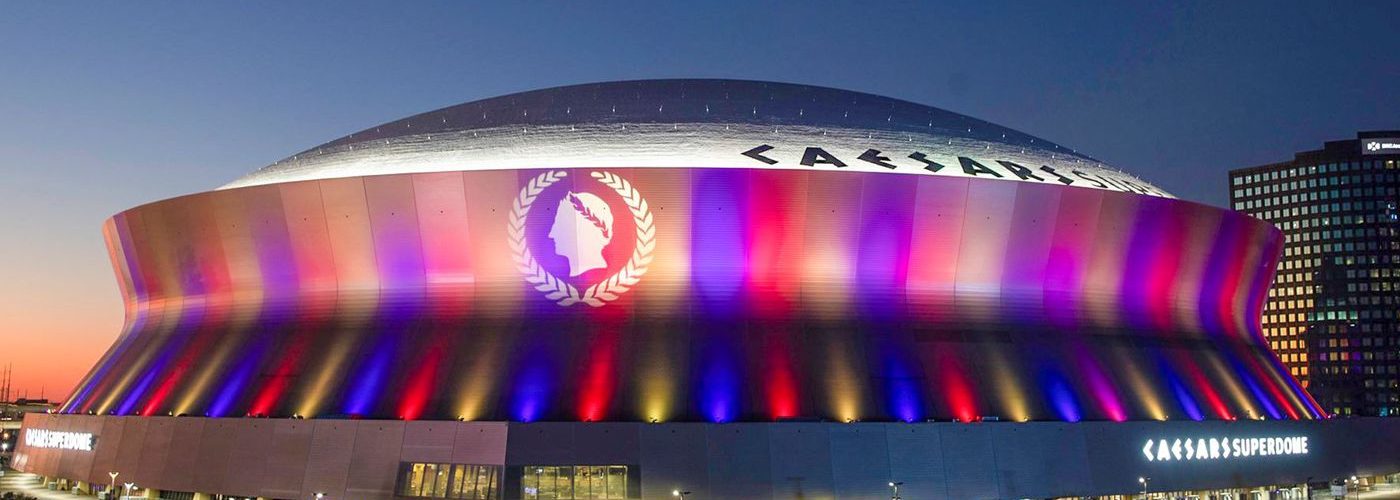Ready for Another Super Bowl
As the NFL season heads toward its climax, teams are jostling for position, aiming to secure a spot at Super Bowl LIX. Slated for February 9, 2025, the historic event will unfold at New Orleans’ iconic Caesars Superdome, a venue that has hosted more Super Bowls than any other stadium in history. Formerly known as the Mercedes-Benz Superdome, this architectural and engineering feat has been a pivotal part of New Orleans’ skyline and continues to be a crown jewel for large-scale events.
When the Super Bowl kicks off in 2025, New Orleans will tie Miami for hosting the most Super Bowls, but the Superdome itself holds the record, having hosted seven times already. This will be the eighth time the Superdome welcomes the world’s most-watched sporting event, with its first in 1978 and the most recent in 2013. So, what makes this stadium so iconic for major events like the Super Bowl?
What Makes the Superdome Unique?
In terms of architecture, the Caesars Superdome is a marvel. Its colossal dome structure, with a 680-foot diameter and a roof covering 9.7 acres, sets it apart as the world’s largest fixed-dome building. The stadium, made entirely from steel, symbolises strength and endurance, with a seating capacity of 73,208, expandable to 76,468, making it one of the most flexible venues for large events.
For those in the construction industry, the Superdome serves as an example of both innovative design and long-term resilience. Its synthetic turf system, the largest continuous one in the NFL, demonstrates how engineering solutions evolve to meet the demands of modern sports and events.
Beyond its physical structure, the Superdome’s history is intertwined with one of the most challenging periods in New Orleans’ history – Hurricane Katrina. In 2005, as the city reeled from the storm’s devastation, the stadium became a sanctuary for residents who couldn’t evacuate. Despite suffering damage from the hurricane, including the peeling off of its outer covering, the Superdome’s restoration was a testament to New Orleans’ resilience. The $185 million refurbishment project, partially funded by FEMA, saved the structure from what could have been a total rebuild.
Super Construction: How the Superdome Came to Be
Like many ambitious projects, the construction of the Superdome didn’t go exactly to plan. Originally expected to open in time for the 1972 NFL season, the construction timeline stretched until August 1975, with the final cost skyrocketing from $46 million to $165 million—a whopping 359% over budget.
Yet, the result was worth the wait and the investment. The Caesars Superdome was never intended to be just a football stadium; it has become a multifunctional space, hosting everything from concerts to conventions, making it a prime example of adaptive reuse in the architectural world. In today’s market, such flexibility is highly prized in both commercial and residential developments, where spaces need to serve multiple purposes. Other spaces designed into this amazing building are so you can bet on sports. In fact, anything you can think of has not been forgotten. The venue is capable of anything.
Bigger Than the Super Bowl?
What could be bigger than the Super Bowl? For the Superdome, the answer is a star-studded concert by Taylor Swift, the global sensation whose fanbase rivals the NFL’s. In October 2024, Swift will play three consecutive shows at the Superdome, the first multi-day event in the stadium’s history, proving its capability to host monumental non-sporting events as well. These concerts are expected to shatter revenue records and serve as a reminder that the Caesars Superdome is a venue that goes beyond sports, setting the stage for large-scale entertainment as well.
Super Bowl LXI: A Look Ahead
As New Orleans prepares for Super Bowl LIX in 2025, the city hopes for a smoother event than the infamous 2013 Super Bowl, which saw a 34-minute power outage in the third quarter. Despite this hiccup, the game between the Baltimore Ravens and San Francisco 49ers was a classic, remembered for its thrilling play and narrow 34-31 victory by the Ravens.
This year, both the Ravens and the 49ers are early favourites for the Super Bowl, setting the stage for a potential rematch. But beyond the football, the Caesars Superdome remains an architectural landmark, embodying innovation, resilience, and adaptability—qualities every building should aspire to.
From the design, construction, and architecture sectors, the Caesars Superdome stands as a case study in the potential of large-scale, multifunctional spaces. As New Orleans prepares to make history once again, the Superdome is ready to prove why it’s the perfect venue for the world’s biggest sporting event.





